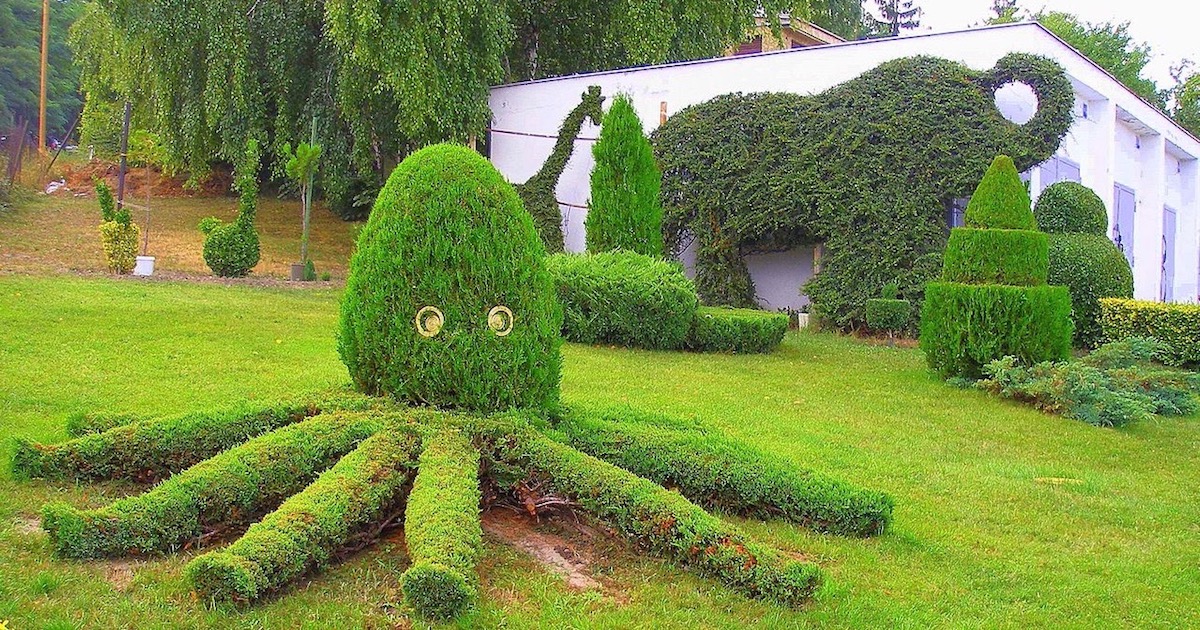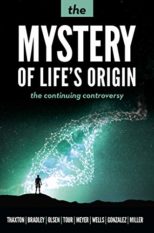 Intelligent Design
Intelligent Design
Blurring the Line Between Natural and Artificial


In 2010, Craig Venter’s lab embedded text and images into the DNA of a bacterium. Would a future investigator be able to tell? It would take special tools to see the insertion, but the difference should be detectable. What if bioengineers invent new genes that use the cell’s translation machinery to build non-natural proteins? This is already coming to pass with CRISPR/Cas9 methods. If the insertion were made in an embryo, all the adult cells would inherit the change. The line between natural and artificial is getting more blurry.
In a sense, the new bioengineering developments are similar in principle to longstanding cases of artificial interference in nature, as in agriculture, camouflage, or construction of simple dwellings with available materials like grass or fallen branches. The Design Filter takes into account what chance and natural law can do. There will always be difficult cases; ID errs on the side of non-intelligent causes when the degree of specified complexity is borderline. But now, specified complexity exists in both “natural” DNA and DNA altered by human intelligence. There should be ways to distinguish between human intelligent causes and non-human intelligent causes, whether those be space aliens, spirit beings, or a transcendent Creator.
Thaxton, Bradley, and Olsen
 In their epilogue to the book The Mystery of Life’s Origin (newly updated and expanded by Discovery Institute Press), Charles Thaxton, Walter Bradley, and Roger Olsen considered five sources for a “more satisfactory theory of origins.” These included: new natural laws, panspermia, directed panspermia, “special creation by a creator within the cosmos,” and “special creation by a creator outside the cosmos.” The last four involve intentional, mind-directed activity; only #5 necessarily involves the supernatural. To the investigator, though, the output of the Design Filter would be the same. It boils down to natural versus artificial: unguided, or mind-directed. But what happens when the mind-directed interference of bioengineers gets so good, it looks natural? It becomes a case of the perfect crime, leaving the investigator baffled. Today’s Mars rovers are easily distinguished from the rocky, dusty environment of Mars. But what if future designers made them look like rocks, functioning when they roll over in the wind?
In their epilogue to the book The Mystery of Life’s Origin (newly updated and expanded by Discovery Institute Press), Charles Thaxton, Walter Bradley, and Roger Olsen considered five sources for a “more satisfactory theory of origins.” These included: new natural laws, panspermia, directed panspermia, “special creation by a creator within the cosmos,” and “special creation by a creator outside the cosmos.” The last four involve intentional, mind-directed activity; only #5 necessarily involves the supernatural. To the investigator, though, the output of the Design Filter would be the same. It boils down to natural versus artificial: unguided, or mind-directed. But what happens when the mind-directed interference of bioengineers gets so good, it looks natural? It becomes a case of the perfect crime, leaving the investigator baffled. Today’s Mars rovers are easily distinguished from the rocky, dusty environment of Mars. But what if future designers made them look like rocks, functioning when they roll over in the wind?
This is a growing challenge for ID as bioengineering progresses. News from ETH Zurich says:
Every living creature on earth has parents, grandparents, great-grandparents and so on — representing an unbroken line of ancestry all the way back to the very first organisms that lived here billions of years ago. Soon we will have life forms that have no such direct lineage. The first of these organisms will be bacteria. Bioengineers will use computers to develop such bacteria and specifically tailor them for applications in medicine, industry or agriculture. With the help of DNA synthesisers, they will build these bacteria’s genomes from the ground up to produce artificial life forms. [Emphasis added.]
This implies that an investigator will have to search the ancestry of an organism to make a design inference.
I don’t mean organisms in which only individual genes have been altered – a technique that has been applied in biotechnology and crop breeding for decades, and that today’s CRISPR gene scissors have made very simple. No, I mean organisms for which bioengineers have literally developed the genome from scratch so that they can synthesise it in the lab.
The author, Dr. Beat Christen of ETH, says this is not science fiction. The tools to do this are already in place. “I am convinced that they will soon be a reality,” he says. It may not require designing every molecular machine de novo.
Digital databases store over 200,000 genome sequences from a broad range of organisms providing us access to a wealth of molecular building plans. By cleverly combining or modifying known genetic functions, bioengineers can develop microorganisms with new and useful characteristics.
Darwin Got Something Right
How would an investigator in such cases be able to differentiate a synthetic organism from known examples of “mosaic organisms” or natural organisms containing orphan genes? On ID the Future recently, Paul Nelson acknowledged from his trip to the Galápagos Islands that Darwin got something right: organisms have a history. There can be some natural modification in a lineage over time, as in the case of flightless cormorants, he said, and ID advocates need to build that into their theory of design. With bioengineering entering the mix, they will also have to distinguish natural history from artificial history in the codes of life.
This is an extension of what they must do in distinguishing the artificial history of cultivated crops and animal breeds. The dachshund looks very different from the wolf from which domestic dogs descended. The ears of corn we buy in supermarkets differ substantially from the maize or teosinte from which farmers selectively bred them. But now that bioengineers can selectively edit the genes, they will have to discern the history in the genotype as well as the phenotype. The ability to do this could become very important.
Another challenge will arise as human history progresses. Right now, we have more clues to trace genetic editing to particular labs. But as the number of gene editing labs grows over time, and editing becomes routine — maybe even to individuals — it may become impossible to trace the edits to their source. This happens with artificial breeding as well; unless particular breeders documented their work, historians and archaeologists can only gain indirect clues to the time and place of origin for a particular breed. It could have started in ancient Babylon, Egypt, or Rome. It’s not ID’s job to identify the agent, the books explain (e.g., The Design Revolution, Chapter 26); the investigator should be able to detect design from its effects alone. Genetic tinkering will make that inference more difficult, if genetic engineers continue to blur the line between natural genetic information and edited genetic information. Moreover, not all gene editors publish their work. As in the case of bioweapons, the source may intentionally try to conceal its designs.
Functional Space and Sequence Space
In Nature, three scientists wrote a review titled, “The coming of age of de novo protein design.” The opening sentence of the article by Huang, Boyken, and Baker makes a point that Douglas Axe and Ann Gauger would agree with: functional space is dwarfed by sequence space.
There are 20200 possible amino-acid sequences for a 200-residue protein, of which the natural evolutionary process has sampled only an infinitesimal subset. De novo protein design explores the full sequence space, guided by the physical principles that underlie protein folding. Computational methodology has advanced to the point that a wide range of structures can be designed from scratch with atomic-level accuracy. Almost all protein engineering so far has involved the modification of naturally occurring proteins; it should now be possible to design new functional proteins from the ground up to tackle current challenges in biomedicine and nanotechnology.
The summary on Phys.org has the title, “Scientists can now design new proteins from scratch with specific functions.” One of the techniques of de novo protein design involves evolutionary algorithms, in which the intelligent agent provides the “selective pressure” to find the fittest protein for the chosen goal. If engineers succeed in taking an amino acid sequence that folds in silico and then can reverse engineer the genetic code for it so that it can be translated by a natural bacterium’s cellular machinery, does it become indistinguishable from an orphan gene? In both instances, the Design Filter would register a positive, but should ID advocates be able to tell the difference? Does it matter?
Another blurring of lines between the natural and the artificial occurs in cases of guiding organisms to do unnatural things. At the Israel Institute of Technology (Technion), biotechnicians have turned a bacterial cell into a biological computer.
In recent decades, the barriers between engineering and life sciences have been falling, and from the encounter between the two different disciplines, a new science — synthetic biology — was born. Synthetic biology introduces engineering into biology, makes it possible to design and build biological systems that don’t exist in nature, and supplies an innovative toolbox for reprogramming the genetic code in living creatures, including humans….
“We built a kind of biological computer in the living cells. In this computer, as in regular computers, circuits carry out complicated calculations,” said Barger. “Only here, these circuits are genetic, not electronic, and information are [sic] carried by proteins and not electrons.”
Once again, telling the difference will require a robust design inference. This type of tinkering might be compared to animal training. Shown two wolves, one trained to respond to human words and one in its wild state, could the investigator tell them apart by their behavior alone? Probably, but discriminating biological computers from wild bacteria could be a lot tougher, tractable only to molecular biologists.
Challenges and Opportunities
These examples in the news present both challenges and opportunities. As lines blur between the natural and the synthetic in the 21st century, the design inference must be tightened accordingly. The specified-complexity criterion is robust against false positives (“This is designed” when it’s not), but not against false negatives (“This isn’t designed” when it is; see William Dembski, No Free Lunch, pp. 22-28). To avoid a growing number of false negatives, the investigator must now become aware of the history of the genotype as well as the phenotype.
It’s well and good to lump all instances of complex specified information into the “designed” category, whether a gene was edited by humans or designed by a transcendent entity. But these rapidly growing capabilities for bioengineering raise additional challenges for the ID community. Fortunately, with the challenges come opportunities. The very act of genetic engineering must surely be raising awareness in the scientific community of the degree of specified complexity in “natural” organisms, and the extremely limited tolerances for success. Nature confesses:
It is useful to begin by considering the fraction of protein sequence space that is occupied by naturally occurring proteins [1012 out of 20200]…Evidently, evolution has explored only a tiny region of the sequence space that is accessible to proteins.
The design inference is not changing in principle; it only needs clarification to fit more challenging cases. It also affords opportunities to communicate design principles to those still clinging to the hope that blind, unguided processes are capable of navigating endless fields of haystacks for a tiny number of needles.
Photo: Topiary animals, by Doko Jozef Kotulič / CC BY.
